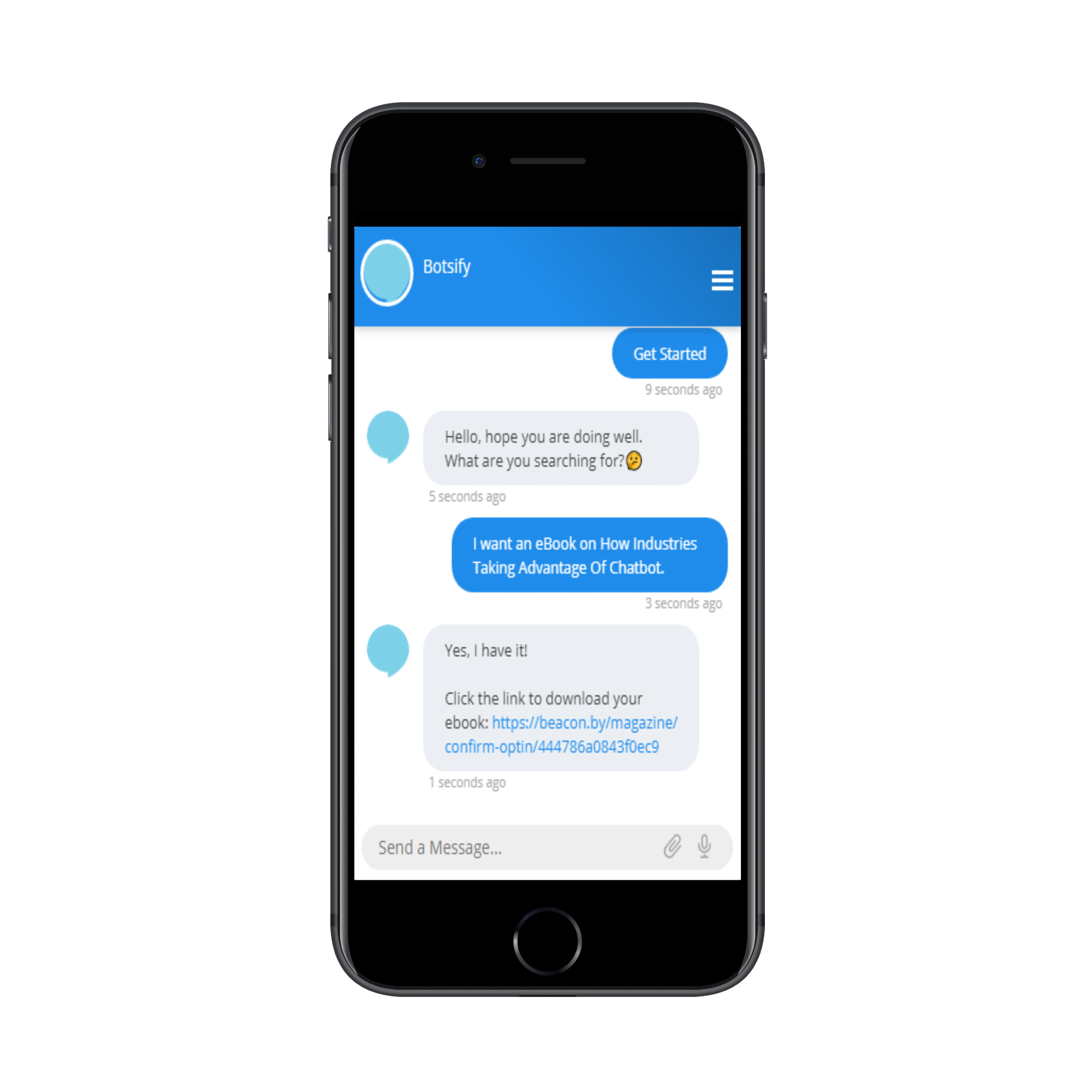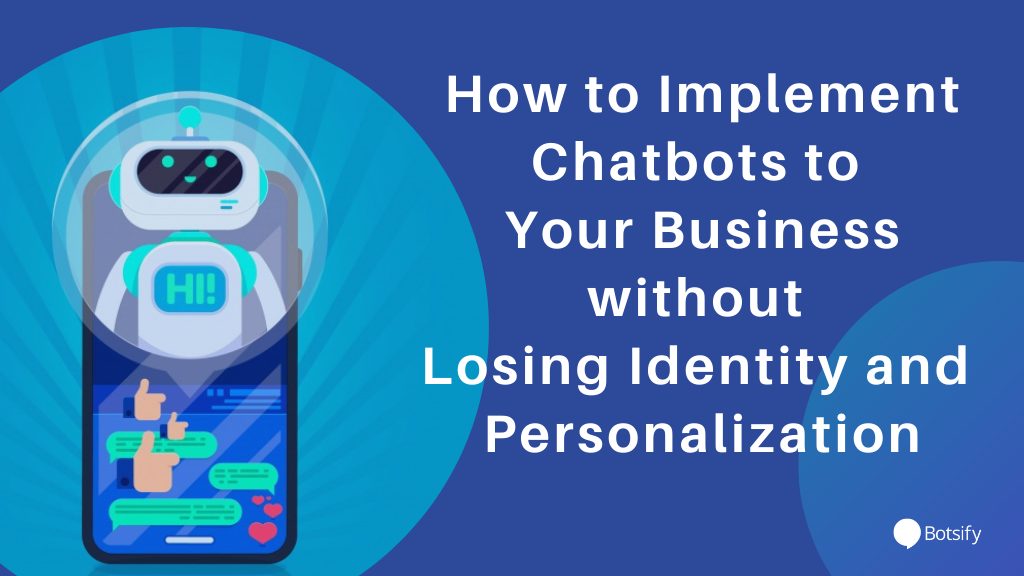Many businesses nowadays use chatbots for their customer service. However, some remain skeptical of its effectiveness.

For one, they believe that using chatbots for business strips their brand identity and personalization. After all, automation lacks the same personality and flexibility as an ordinary human being. You risk sounding robotic and repetitive to your customers.
But today’s chatbots are smarter and more customizable. With the right software and implementation, you can use chatbots without losing your brand’s identity and personalization. Keep the following tips in mind to take full advantage of the many chatbot benefits for business.
1. Consider using AI-powered chatbots
Artificial intelligence (AI) is more accessible in today’s business landscape. In fact, 8 out 10 businesses use AI-powered chatbots for their customer service and support.
AI-powered chatbots are sophisticated. They can learn and improve how it interacts with your customers. Moreover, you can program it to have more complex responses to varying situations and circumstances.
Nonetheless, this will still require extensive programming and training. But if you have good software, accomplishing this process is a breeze. You can program different scenarios and their respective reactions for your chatbot to be effective and efficient. This will allow your bot to understand and recognize the proper ways to respond to your customers.

2. Create a persona for your bot
One of the popular chatbot business ideas is to create a persona that represents their brands. In a way, your chatbot serves as your mascot that encapsulates your business’ identity. This makes it easier for your customer to remember your brand and recognize it from anywhere else. Moreover, this simple step can humanize your bot in your customers’ eyes.
You can do this by putting a face and a name to your chatbot, allowing your customers to see who they are interacting with. The psychology to this is almost similar to when you suddenly receive a message from a random person in your Messenger or WhatsApp. You will feel skeptical or wary when you cannot see any profile photo in the chat bubble. It also won’t help if you can’t even name who you are conversing with.
3. Give bot some personality
To complete your bot’s character, you should also add some personality to it. After all, nobody enjoys talking to someone who speaks like a robot. Without personality, your chatbots might turn away your customers.
You can show your bot’s personality through its language and tone. Program it to sound more conversational and casual instead of too formal and stiff (unless that matches your branding) so your bots can build rapport with customers faster. You can even add personalization by letting your bot address the customer by name.
Emotional responses can also bring out your bot’s personality. By showing empathy, your bot does more than just show its capability to understand the customer. It also cements the idea that your brand values their feelings and opinions. So don’t forget to program varying emotional responses in your chatbot implementation steps.
4. Allow visual expressions
People love to use emojis, GIFs, and memes in their virtual interactions. A recent study shows that a post or message with emojis tends to have a 25% higher engagement rate than those without.
With that, consider programming your chatbots to respond with visual expressions like emojis, GIFs, and even memes. This helps them convey emotions and meanings while also keeping a friendly connection with your customers.
With the appropriate visual cues, your chatbot can maintain personalization with each interaction. It can make your customers feel comfortable to the point of trusting it. This can also help build up your brand identity and credibility in the process.
5. Provide human backups
Even when your chatbots are very good, they still come with some limitations. After all, their main purpose is to speed up your response time and take care of basic and recurring inquiries. In turn, free up your agent’s time to handle the more crucial concerns.
You can look for chatbot software that will give you the option to seamlessly transfer conversations to your human agents. For example, Botsify is an automated chatbot tool that allows your agents to monitor your chatbot during a live chat. With just a few clicks, they can take over any interactions with customers when needed.
6. Integrate with other software
You can enhance the customer experience with your chatbots software by integrating it with other software. Some examples are the different types of customer service software, helpdesk software, and ticketing system. This gives your bot access to various data, functions, and features to improve its interactions and responses to your customers.
Having a chatbot is not just helpful for your website. It’s also beneficial to have one for communication apps like WhatsApp, Facebook, and emails. This makes your brand even more accessible to your customers in the process.
After all, almost everyone nowadays uses apps like these for their daily communication. It will be more convenient for both sides to interact in these channels than restricting communication on your website.

7. Leverage data and analytics
Leveraging data allows your chatbots to understand and learn the patterns and behaviors of your customers. It gives them an idea of how your customers usually respond in certain situations, their demands, and their needs. In turn, it teaches your chatbots how best to communicate with them.
You can gather data by recording and analyzing past conversations between your chatbots and your customers. This allows you to take note of frequently asked questions, common issues with your products/services, and your customers’ reaction to your chatbot’s performance.
The right data can help you come up with more scenarios for your chatbot’s programming. As a result, you can expand its potential reactions and reactions appropriate for varying situations. You can also use it to create more personalized experiences for your customers. This way, your bot can satisfy their respective demands and needs without further human interference.
Giving chatbots a chance
There are many benefits to using chatbots for your customer service. It ensures that your customer support is always accessible and available for anyone who needs it. It reduces waiting time for your customers and workload for your human agents.
Nonetheless, many organizations remain skeptical about using chatbots for their operations. They fear that bots might make their customers feel uncomfortable with their brand. Most importantly, they are afraid that it might strip away their brand identity and personalization.
But with a proper chatbot implementation plan, you can avoid such fate for your organization. Nowadays, chatbot tools are getting more and more sophisticated. More bots are now capable of learning complex reactions and responses. Some can even mimic the behaviors of real humans to the point where customers can no longer differentiate chatbots from human agents. And with these tips in mind, you can confidently rely on your chatbot to show off your brand’s identity.

